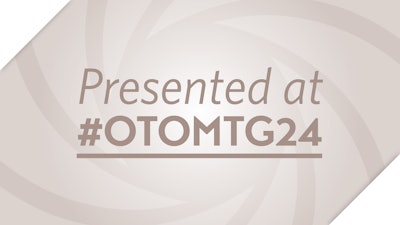Otolaryngologic Manifestations of Burn Pit Exposure
Veterans exposed to burn pit smoke suffer from acute and chronic respiratory symptoms as well as an increased risk of head and neck cancers.
Avanti Verma, MD

Each year, otolaryngologists are evaluating more and more veterans for conditions that are associated with toxic exposures. In 2022, the Promise to Address Comprehensive Toxins (PACT) Act was passed in honor of Sergeant First Class Heath M. Robinson, who passed away at age 39 from stage 4 adenocarcinoma of the lung and an autoimmune condition of mucous membranes related to extensive burn pit exposure during his deployment as a combat medic in Iraq and Kosovo. The PACT Act is considered one of the largest healthcare and benefits expansions in Veterans Affairs (VA) history, with the addition of over 20 presumptive conditions that are a result of exposure to multiple toxic agents, including Agent Orange, industrial solvents/chemicals, radiation, and burn pits. Many of the new PACT Act presumptive conditions are relevant to the field of otolaryngology, including chronic rhinitis, chronic sinusitis, melanoma, and head and neck cancer of any type.
Burn pits were commonly used in post-9/11 military operations in the Middle East as areas of open-air combustion to dispose of waste such as paints, solvents, munitions, lubricants, and combustible products. Veterans who are exposed to burn pit smoke suffer from acute and chronic respiratory symptoms, which led to the creation of the VA Airborne Hazards and Open Burn Pit Registry (AHOBPR) in 2014. While the association with pulmonary and lower respiratory conditions are better studied, there is recent interest in analyzing an impact on the upper respiratory tract. At the AAO-HNSF 2024 Annual Meeting & OTO EXPO, Sarah Rapoport, MD, Toby Steele, MD, Lane Squires, MD, and I held a Panel Presentation on otolaryngologic problems related to burn pit exposure among the U.S. veteran population. We reviewed the pathophysiology and conditions related to burn pit exposure, as well as the process to handle claims related to this exposure.
Air sampling studies have shown that open-air burn pits release combustion particles in the form of fine particulate matter < 2.5 microns in diameter (PM2.5), as much as 10 times greater than rural and urban areas in the U.S.1 Particulate matter is a mixture of solid and liquid droplets, generally in the form of coarse particulate matter (PM10) and fine particulate matter (PM2.5). PM2.5 exposure affects the sinonasal tract by causing increased mucous production, goblet cell hyperplasia, and inflammatory cell infiltration, which can all lead to ciliary dysfunction. In patients with chronic rhinosinusitis, each unit increase of PM2.5 was associated with a 1.89-fold increase in the proportion of patients who required functional endoscopic sinus surgery.2 Patients with higher PM2.5 exposure were more likely to under revision endoscopic sinus surgeries.3 In a case-controlled study of active-duty veterans, every 5 mg/m3 of PM2.5 exposure was associated with an odds ratio of 5.99 for the development of chronic sinusitis, which remained significant with an odds ratio of 3.15 when adjusting for smoking status.4
While studies demonstrating a relationship between PM2.5 exposure and chronic sinusitis have informed our knowledge of the hazards related to burn pit exposure, burn pit smoke is made up of heterogenous materials and may not correlate with the airborne exposures that were studied. Furthermore, much less is known about the impact of burn pits on other otolaryngologic conditions. Multiple studies have shown an association between World Trade Center dust exposure with prevalence and severity of obstructive sleep apnea.5-7 However, a prospective observational study of previously deployed military personnel demonstrated a lower apnea-hypopnea index in the exposed group compared with the control group, with a similar nadir of oxygen saturation. There was no significant increase in prevalence among those who performed burn pit maintenance.8 To date, there has been minimal investigation into the association of burn pit exposure with the diagnosis of head and neck cancer, though this is now a presumptive condition under the PACT Act.
We need to increase research efforts related to burn pit exposure. The first step is to be able to document and quantify exposure history, which is subject to recall bias and confounders related to pre- and post-deployment exposures. Epidemiological studies are also imperative, though require objective measures of disease for which questionnaires (such as SNOT-22) and need for revision surgery may not be sufficient. Testing burn pit exposure in preclinical models may also be challenging due to the heterogeneous composition of burn pits. However, this stage of study would be critical to develop translational studies based on disease mechanism and eventually novel therapeutics, with the goal of improving clinical and individualized care.
Not only did our panel call for further study of the impact of burn pit exposure on otolaryngologic conditions, but it also highlighted the importance of service-connection disability claims related to toxic exposures. For presumptive conditions under the PACT Act, the VA will award disability compensation automatically if the condition is diagnosed, as long as the veteran meets the service/deployment and location requirements. VA physicians can provide the diagnosis in CPRS, the VA’s electronic medical record, and may complete a Nexus statement, which is not necessarily required though can strengthen the claim. Non-VA physicians may also establish and document the diagnosis. They would not be required to supply a Nexus statement, though they may be asked to complete a Disability Benefits Questionnaire.
Since Congress passed the Veterans Choice Act in 2014 and the VA MISSION Act in 2018, which broadened eligibility and access to community care, it has become increasingly important to educate otolaryngologists who treat these patients about the negative effects of burn pit exposure. I would like to thank my co-panelists, Drs. Rapoport, Steele, and Squires, and the Academy for the opportunity to present on this important topic at the 2024 Annual Meeting. We hope this information will educate and inspire otolaryngologists to pursue further investigation of this problem that impacts U.S. veterans.
References
- Davis CW, Rabin AS, Jani N, et al. Postdeployment respiratory health: the roles of the airborne hazards and open burn pit registry and then post-deployment cardiopulmonary evaluation network. Fed Pract. 2022; 39(8): 337-343.
- Mady LJ, Schwarzbach HL, Moore JA, et al. The association of air pollutants and allergic and nonallergic rhinitis in chronic rhinosinusitis. Int Forum Allergy Rhinol. 2018; 8(3): 369-376.
- Hagedorn R, Tullis B, Nguyen C, et al. Does air pollutant exposure impact disease severity or outcomes in chronic rhinosinusitis? Int Forum Allergy Rhinol. 2024; 14(4): 755-764.
- Elam T, Raiculescu S, Biswal S, et al. Air pollution exposure and the development of chronic rhinosinusitis in the active duty population. Mil Med. 2023; 188(7-8): 1965-1969.
- Ahuja S, Zhu Z, Shao Y, et al. Obstructive sleep apnea in community members exposed to world trade center dust and fumes. J Clin Sleep Med. 2018; 14(5): 735-743
- Glaser MS, Shah N, Webber MP, et al. Obstructive sleep apnea and world trade center exposure. J Occup Environ Med. 2014; 56: S30-S34
- Webber MP, Lee R, Soo J, et al. Prevalence and incidence of high risk for obstructive sleep apnea in world trade center exposed rescue/recovery workers. Sleep Breath. 2011; 15(3): 283-294
- Powell TA, Mysliwiec V, Aden JK, Morris MJ. Burn pit exposure in military personnel: is there an effect on sleep-disordered breathing? Sleep Breath. 2021; 25(1): 479-485.




















